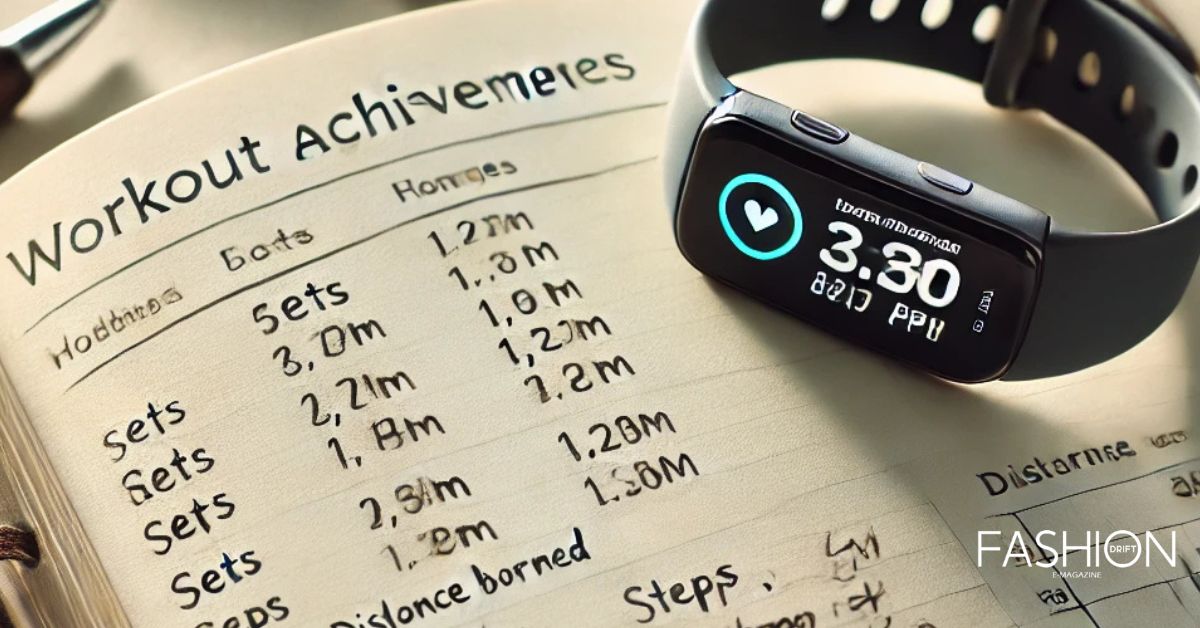
Staying motivated to exercise consistently can be challenging, but building habits that last is key to long-term fitness success. Whether you’re just starting your fitness journey or you’re well into it, here are some proven tips and strategies to keep you inspired and moving toward your goals.
1. Set Clear, Achievable Goals
Tip: Start by defining why you want to exercise. Your goals could be as broad as improving health or as specific as running a 5K. The more concrete your goals, the easier it is to measure your progress and stay focused.
Example goals:
- Complete a 30-day workout challenge.
- Increase your squat weight by 10% in three months.
- Run 5K without stopping by the end of the month.

2. Create a Realistic Schedule
1. Introduction: The Importance of a Realistic Schedule
- Why schedules matter for achieving personal and professional goals.
- The balance between ambition and practicality: avoiding burnout while staying productive.
2.Understanding Your Goals and Priorities
- Setting short-term and long-term goals as a foundation for the schedule.
- Prioritizing activities and tasks according to urgency and importance.
- Using tools like the Eisenhower Matrix (urgent-important vs. non-urgent, etc.) to prioritize.
3.Assessing Your Time and Energy Levels
- Evaluating daily and weekly time commitments (work, family, self-care, hobbies).
- Recognizing peak productivity times and energy dips throughout the day.
- The benefits of aligning tasks with energy levels (e.g., complex tasks during peak energy).
4.Breaking Down Tasks into Manageable Chunks
- Using techniques like time-blocking to allocate specific times for focused work.
- Chunking large projects into smaller, actionable steps for manageable progress.
- Planning rest periods to prevent fatigue and improve focus.
5.Choosing the Right Scheduling Tools
- Recommendations for digital tools (Google Calendar, Notion, Asana, etc.) and analog options (planners).
- Benefits of each tool and how they can improve your organization and accountability.
6.Allowing for Flexibility
- Building in buffer times to account for unexpected delays or opportunities.
- Adjusting the schedule regularly to adapt to changing priorities.
- Embracing the concept of a “flexible structure” where rigidity is minimized.
7.Setting Boundaries and Eliminating Distractions
- Establishing boundaries around work and personal time to avoid overworking.
- Identifying and managing distractions effectively (phone notifications, social media).
- Using techniques like the Pomodoro Technique to stay focused.
8.Regularly Reviewing and Adjusting the Schedule
- Conducting weekly reviews to assess what’s working and what isn’t.
- Setting aside time to refine and adapt the schedule to ensure ongoing alignment with goals.
9.Conclusion: Achieving Balance and Success with a Realistic Schedule
- Recap of the benefits of a well-structured, flexible schedule.
- Encouragement to focus on consistency over perfection.

3. Find Workouts You Enjoy
- Start with Your Interests and Personality
- Consider Your Preferences: Think about the types of activities you naturally enjoy or gravitate towards. If you love music and socializing, dance classes like Zumba or cardio hip-hop might be a good fit. If you prefer solitude and relaxation, yoga or Pilates could be more your style.
- Think About Your Energy Levels: Are you someone who thrives on high energy and intensity, or do you prefer slower-paced workouts that focus on technique and endurance? Knowing this can guide you towards workouts that feel good for you.
- Experiment with Different Types of Workouts
- Cardio Options: If you’re looking for heart-pumping, high-energy workouts, try different forms of cardio such as running, cycling, rowing, or high-intensity interval training (HIIT).
- Strength Training: Test out bodyweight exercises, dumbbells, resistance bands, or machines to build strength. Weightlifting doesn’t have to be heavy; light weights can still deliver a great workout and improve muscle tone.
- Flexibility and Mobility Work: Yoga and Pilates are fantastic for building flexibility and balance. They’re also great options if you prefer low-impact movements.
- Team Sports and Group Fitness: If you enjoy socializing, try group workouts like spinning, aerobics classes, or sports like soccer, basketball, or tennis.
- Make Use of Trial Classes and Online Options
- Sample Classes: Many fitness studios offer free trial classes for new members, allowing you to experiment without commitment.
- YouTube and Fitness Apps: Online platforms like YouTube and apps like Peloton, Nike Training Club, or FitOn offer a variety of workouts. Explore options from yoga to kickboxing, led by trainers who specialize in creating enjoyable and engaging routines.
- Set Goals Beyond Physical Appearance
- Performance-Based Goals: Goals like completing a certain number of push-ups, running a mile without stopping, or improving flexibility can be motivating and rewarding. These types of goals often help people find workouts they love, as they start focusing on what their body can do rather than just how it looks.
- Mental Health Goals: Many people find workouts they love by choosing exercises that enhance their mental health. Activities like yoga, running, or swimming often help relieve stress and improve mood.
- Schedule a Variety of Workouts
- Mix It Up: Rotate different types of workouts throughout the week. Mixing cardio, strength, and flexibility workouts can help you avoid burnout and keep things interesting.
- Incorporate Rest Days: Rest is a crucial part of any workout regimen, allowing your body time to recover. Plan active rest days where you take a walk, stretch, or do gentle yoga to keep moving without overexerting.
- Track What You Enjoy
- Keep a Workout Journal: Note what you enjoy about each type of workout and how you feel afterward. Over time, you’ll see patterns emerge, helping you to narrow down what really resonates with you.
- Reflect on Progress: Revisit your notes to see how far you’ve come. If you feel good about your achievements, you’ll be more inclined to keep going.
4. Partner Up for Accountability
1. Choose the Right Partner
- Similar Goals: Choose someone with similar fitness goals or a compatible approach to health. If you’re focusing on strength training, a partner who enjoys and values the same kind of workout will help keep you on track.
- Similar Schedule and Availability: Ensure your schedules are compatible so you can coordinate workouts. Finding a time that works for both can make it easier to stay consistent.
2. Set Clear Goals Together
- Define Your Goals: Work together to set personal and shared goals, whether it’s working out a certain number of days per week, improving endurance, or learning a new skill. This way, you both know what you’re working toward.
- Create Milestones: Plan check-in points to evaluate your progress and make adjustments as needed. These milestones can keep you both motivated and allow you to celebrate smaller achievements along the way.
3. Establish Accountability Check-Ins
- Regular Meetings or Calls: Set up weekly or biweekly check-ins where you can discuss progress, challenges, and how to support each other better.
- Daily or Weekly Updates: Send each other quick texts or notes after completing workouts or hitting nutrition targets. These small nudges act as positive reinforcement and show that someone’s rooting for you.
4. Make Workouts Fun and Varied
- Try Partner Workouts: Partner exercises like medicine ball passes, partner push-ups, or assisted stretches are a great way to bond and keep workouts interesting.
- Challenge Each Other: Friendly competition, like seeing who can do more reps or hold a plank longer, can help keep things lighthearted and exciting.

5.Track Your Progress
Seeing progress, even in small amounts, can be incredibly motivating. Keep track of metrics that matter to you, like the number of reps, running distance, or how much weight you’re lifting. Apps and journals can help you visualize how far you’ve come and encourage you to keep going.

6. Reward Yourself
Rewards can reinforce your hard work and keep you motivated. After achieving a milestone, treat yourself to something special. This could be anything from new workout gear to a relaxing spa day. Just make sure the reward aligns with your fitness goals!

7. Switch Up Your Routine
Doing the same exercises over and over can lead to boredom. Mixing up your workouts not only keeps things fresh but also challenges your muscles in new ways. Try different workouts, like HIIT one week and yoga the next, or change up the environment by exercising outdoors.
8. Focus on the Benefits Beyond Appearance
- Boosts Mental Health and Reduces Stress
- Reduces Anxiety and Depression: Exercise triggers the release of endorphins, known as “feel-good” hormones, which can significantly improve mood. Many find exercise helps manage symptoms of depression and anxiety by creating a natural boost in mental well-being.
- Lowers Stress Levels: Physical activity can reduce cortisol, a stress hormone, and helps the mind release tension. Activities like yoga, running, and even walking can be incredibly calming and meditative.
- Improves Cognitive Function and Focus
- Sharpens Memory and Learning Abilities: Regular exercise enhances memory by promoting the growth of new neurons in the brain, particularly in the hippocampus (important for learning and memory). This can help with work, studying, or any activity that requires mental clarity.
- Increases Focus and Energy Levels: Exercise increases blood flow to the brain, improving alertness and focus. This can be particularly beneficial for anyone dealing with demanding work schedules or studying.
- Enhances Physical Health and Longevity
- Strengthens Heart and Reduces Chronic Disease Risk: Cardiovascular exercises, strength training, and even gentle movement improve heart health, lower blood pressure, and reduce the risk of diseases like diabetes and heart disease.
- Improves Immune System Function: Regular physical activity enhances the immune response, helping the body fight off illnesses more effectively.
- Supports Joint Health and Bone Density
- Prevents Joint Stiffness and Reduces Risk of Osteoporosis: Weight-bearing exercises like walking, strength training, and even dancing help maintain bone density and joint health. They strengthen the body’s framework, which can help prevent injuries and manage pain from conditions like arthritis.
- Increases Flexibility and Range of Motion: Exercises that include stretching, like yoga or Pilates, help keep the muscles and joints flexible. This flexibility supports mobility as we age and reduces the risk of injuries.
- Increases Self-Efficacy and Builds Confidence
- Boosts Self-Esteem: Seeing progress in your physical abilities—like lifting more weight, running further, or achieving a new yoga pose—can greatly enhance confidence. This sense of achievement promotes a positive self-image, which is especially valuable in developing self-esteem based on abilities rather than appearance.
- Builds Resilience and Mental Toughness: Pushing through challenges in fitness, whether it’s a challenging run or a heavy lift, translates to life. Exercise teaches resilience, helping you handle obstacles with a stronger, more resilient mindset.
- Encourages Better Sleep and Restorative Recovery
- Improves Sleep Quality: Physical activity often leads to better sleep. Exercise can help reduce insomnia and improve the quality of rest, which in turn supports mental alertness and physical recovery.
- Helps with Relaxation: Post-workout relaxation and the natural release of endorphins contribute to a more restful state, helping to ease you into sleep and better sleep quality.
- Enhances Social Connections
- Increases Social Engagement: Many fitness activities, like group classes, sports leagues, or running clubs, offer opportunities for connection. These connections can lead to new friendships and support networks that add a meaningful social dimension to life.
- Provides a Sense of Community: Belonging to a fitness group or community can create a support system where members motivate and encourage each other, which can make exercise more enjoyable and provide accountability.
- Improves Quality of Life and Longevity
- Increases Energy and Stamina for Daily Activities: Regular exercise builds endurance, helping with daily tasks like walking up stairs, carrying groceries, and playing with kids. This can make day-to-day life more enjoyable and less physically taxing.
- Promotes Independence as You Age: Staying active helps maintain balance, strength, and flexibility, which reduces the risk of falls and injuries later in life. This can make it easier to remain independent and mobile as you age.

9. Remember: Consistency Over Perfection
Perfection isn’t the goal; consistency is. Everyone has off days. Missing a workout or two doesn’t mean you’ve failed—just pick back up where you left off. Celebrate the small wins, and recognize that each workout builds momentum for the next.
Conclusion
Staying motivated is all about finding what works for you, setting realistic goals, and enjoying the process. Remember that building a long-term habit of exercise takes time. Celebrate every small win, and don’t be too hard on yourself along the way. The fitness journey is ongoing, so make it as enjoyable and rewarding as possible.





Comments (24)
Brianvoksays:
29/01/2025 at 13:15Farmacie on line spedizione gratuita: Farma Prodotti – acquistare farmaci senza ricetta
acquistare farmaci senza ricetta
Edwarddipsays:
31/01/2025 at 07:58farmacie online autorizzate elenco: Farma Prodotti – farmacie online affidabili
DavidAbonssays:
31/01/2025 at 11:31http://taya777.icu/# Some casinos have luxurious spa facilities.
Most casinos offer convenient transportation options.
Patricksnubysays:
31/01/2025 at 12:55The poker community is very active here.: taya777 login – taya777
JosephLibsays:
31/01/2025 at 13:19phtaya [url=https://phtaya.tech/#]phtaya login[/url] The casino industry supports local economies significantly.
Williamamushsays:
31/01/2025 at 13:56The casino experience is memorable and unique. http://winchile.pro/# Hay casinos en Santiago y ViГ±a del Mar.
Lannypersays:
31/01/2025 at 14:13Players enjoy a variety of table games.: phmacao.life – phmacao com
DavidAbonssays:
31/01/2025 at 15:37https://taya365.art/# The poker community is very active here.
п»їCasinos in the Philippines are highly popular.
Patricksnubysays:
31/01/2025 at 17:54Resorts provide both gaming and relaxation options.: taya365 login – taya365.art
Lannypersays:
31/01/2025 at 19:09Slot machines feature various exciting themes.: taya777 login – taya777 login
DavidAbonssays:
31/01/2025 at 19:39http://taya777.icu/# Casinos offer delicious dining options on-site.
The casino atmosphere is thrilling and energetic.
JosephLibsays:
31/01/2025 at 21:52taya777 register login [url=https://taya777.icu/#]taya777 app[/url] Cashless gaming options are becoming popular.
Patricksnubysays:
31/01/2025 at 22:49The casino scene is constantly evolving.: phtaya.tech – phtaya casino
DavidAbonssays:
31/01/2025 at 23:31https://winchile.pro/# La seguridad es prioridad en los casinos.
The Philippines has several world-class integrated resorts.
Williamamushsays:
31/01/2025 at 23:54The Philippines offers a rich gaming culture. http://phtaya.tech/# Resorts provide both gaming and relaxation options.
Lannypersays:
01/02/2025 at 00:00The gaming floors are always bustling with excitement.: taya365 com login – taya365.art
DavidAbonssays:
01/02/2025 at 03:20https://phmacao.life/# Some casinos feature themed gaming areas.
The Philippines has several world-class integrated resorts.
Patricksnubysays:
01/02/2025 at 03:38Online gaming is also growing in popularity.: taya777 – taya777 register login
Williamamushsays:
01/02/2025 at 04:37Cashless gaming options are becoming popular. https://taya365.art/# Most casinos offer convenient transportation options.
Lannypersays:
01/02/2025 at 04:41Many casinos provide shuttle services for guests.: taya777 login – taya777 login
DavidAbonssays:
01/02/2025 at 06:52https://jugabet.xyz/# Las apuestas deportivas tambiГ©n son populares.
Many casinos offer luxurious amenities and services.
Patricksnubysays:
01/02/2025 at 08:14Most casinos offer convenient transportation options.: taya777 login – taya777 login
Williamamushsays:
01/02/2025 at 09:18The casino industry supports local economies significantly. http://phmacao.life/# Slot machines attract players with big jackpots.
DavidAbonssays:
01/02/2025 at 10:18http://winchile.pro/# Las promociones de fin de semana son populares.
Casinos offer delicious dining options on-site.